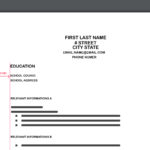A dissertation is a long write-up in academic writing on the original study in which you’re expected to conduct extensive research. It is submitted as a part of your Bachelor’s, Master’s, or Doctoral degree. This is also considered to be one of the longest write-ups of the document that you’ve written so far throughout your academic session. So, now that you’re familiar with the dissertation and have also chosen your topic, it’s time that you should start working on your dissertation.

Although writing a dissertation is a nightmare for several students, but you can also pay people to do assignments, and this can help you in getting good grades by getting online homework writing services. However, if you think that you can write your thesis on your own then follow the below listed steps to craft your thesis report to perfection.
What Goes Into An Excellent Dissertation?
You must’ve prepared numerous assignments and your writing skills may also have improved throughout your academic sessions but writing a dissertation is different and requires a lot of research and advanced writing skills. Here is all that’s covered under a dissertation.
Title Page
This is the first impression of your dissertation to your readers and gives them an idea of what they’ll find inside the thesis. The title page consists of the title of your dissertation, your name, your department, your institution, your degree program, as well as the submission date. Hence,
you should invest some time in thinking about the title of your thesis which must be specific and succinct.
Acknowledgment Page
This section of your dissertation gives you a chance to appreciate those who’ve helped you throughout your research journey. Although this section is optional and mostly doesn’t count towards your marks; however, this is considered to be a great practice in academics to include
in your dissertation. You can include your dissertation committee or supervisor, along with some other important people who’ve played an important role in your dissertation. These include your professors, mentors, and even your family members
Abstract
This part of your dissertation serves as a way to provide an overview of what your readers might be able to find in the dissertation. You should be able to give them an understanding regarding the key insights as well as findings from your research, without them having to read the entire
dissertation. In short, this section should be able to stand alone. Hence, it has to include the following important points:
- Research aims and questions
- The methodology used in the dissertation
- Your findings
- The conclusion
Table of Content
In this section of the paper, you list all the chapters as well as the subheadings along with their page numbers. In addition to this, you also need to make sure all these headings are hyperlinked in the dissertation. This section provides an overview of the structure and helps readers in easily navigating through the document. We suggest that you use Microsoft Word’s automatic table of contents generator for creating your TOC.
The Main Chapters
The following main chapters are considered to be the core chapters of any dissertation. By clearly stating these chapters, you’ll be able to earn good grades. These chapters are explained in detail below.
Chapter 1: Introduction
This is the first chapter of your dissertation in which you inform about the topic of your dissertation along with its purpose as well as the relevancy of the dissertation. In addition to this, you also need to in form your readers about what they can expect in the rest of the dissertation.A strong introduction consists of the following main points:
- Establishing the research topic by providing relevant background information
- Narrow down the research topic
- Highlight the state of existing research regarding the topic
- Mention your research questions and objectives.
- Provide an overview of the structure of your research
Chapter 2: Literature Review
Before starting research, you must’ve conducted a literature review for gaining a thorough understanding of the academic work that is already present regarding your topic. Hence, you should do the following steps for completing this part:
- Gathering sources, such as journal articles and books, and selecting the relevant ones
- Critically analyze and evaluate each source
- Make connections between these sources for making an overall point
You shouldn’t only summarize existing studies, but you should be able to create a coherent structure as well as the argument that results in justifying your research. Since this section is considered to be the most important yet difficult part of your research, often students consider to
pay for assignments to get literature review done successfully.
Chapter 3: Methodology
After investigating the existing state of knowledge in the previous chapter, you know the existing key frameworks, models, and theories. In this section, you have to discuss the way through which you conducted your research. In this way, you’ll enable your readers to assess the validity
of your dissertation. While at it, you need to remember that you’ll be graded on your thesis based on the research skills that you’ve demonstrated. Hence, the professor needs to see the
method that you’ve used along with the reason for choosing the specific method and how you’ll use it effectively.
Chapter 4: Results
After you’ve gathered your data and have also undertaken your analysis, you’ll then demonstrate the raw results of your analysis. You can develop this section around your topic, hypothesis, or even your sub-questions. Furthermore, you can also include charts, graphs, and tables to present your data in the best possible way. These tables or graphs should present
additional information to your readers rather than repeating the information that you’ve already discussed. This chapter is descriptive instead of being analytical.
Chapter 5: Discussion
In this section, you’ll explore the implications as well as the meaning of your results concerning your research questions. You need to interpret the results in detail and discuss whether your expectations have been met or not. You can also consider alternative interpretations of your data along with discussing the limitations that might’ve influenced your results. In this part, you also need to reference other scholarly work for showing your results and how well they fit with the current studies.
Chapter 6: Conclusion
This section should contain a concise answer to the main research questions. In this way, your reader will understand the central argument. In this part, you’ll wrap up the dissertation with some final remarks on how you achieved the result along with the purpose of the research. You
can also include recommendations for research or future studies. You can also show how your dissertation has contributed to the existing researches and why it’s important.
Reference List
You should include all the sources that you’ve used in your dissertation. Although you should follow a consistent referencing style along with the specific requirements for formatting the list. This a straightforward section; however, you shouldn’t handle the software manually because
it’s prone to error. Although a bibliography is different from a reference list. A bibliography includes resources that weren’t directly used in your dissertation but have informed your thinking. So you need to double-check to use the right one.
Appendix
This is the very last section of your dissertation. In this section, you’re required to add information that supports your evidence and data. In addition to this, you should also include in- depth information that isn’t essential to the core analysis. The information that doesn’t fit into the
main body becomes a part of this section.
Have Limited Time? Pay for Assignment to Credible Writing Professionals
The main chapters of your dissertation should reflect your research process. Writing a dissertation requires time, effort, and a lot of research. If you don’t have time to invest in your dissertation, then we’d suggest getting it done by professional writers.



